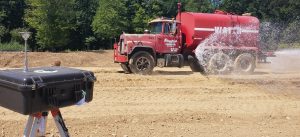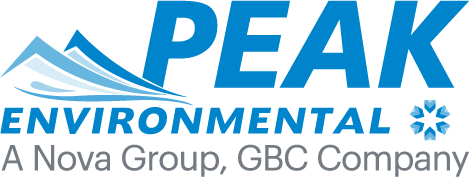
On December 4, 2023, the NJDEP Contaminated Site Remediation and Redevelopment (CSRR) program published their Perimeter Air Monitoring Technical Guidance for Sites Undergoing Remediation (Guidance) to help regulated entities comply with N.J.A.C. 7:26E-5.5(b)7. This regulation mandates that a Remedial Action Workplan (RAW) for a Site regulated by CSRR must include “…a perimeter air monitoring and action plan, to be implemented during a remedial action, if applicable, designed to monitor and control off-site excursion of dust, vapor and odors”. This Perimeter Air Monitoring Plan (PAMP) is necessary for remediation sites that involve soil disturbances, excavations, construction grading, or surface preparation. Construction vehicle traffic, use of excavators and earth movers, and other disturbances can lift particulates and contaminants into the air column. Once airborne, they can be carried to neighboring properties by wind, representing a risk to human health. This potential exposure to off-site receptors must be mitigated through development and implementation of a PAMP prepared by qualified professionals.
The Guidance is a technical document that presents best practices for preventing and mitigating air quality as affected by the remediation project. NJDEP prefers the use of automated field instruments providing real-time data to measure levels relative to standards that are protective of human health. This approach provides the fastest response if issues arise, or action levels are exceeded.
The Guidance provides a template that includes seven detailed steps for the development and execution of a PAMP. Logic for decision making is provided for each step, including selection criteria for the best applicable methods and technologies, and methods for calculating site-specific threshold values and action levels. Monitoring approaches are described relative to locations and frequency, and confirmatory sampling methods are discussed. Appropriate responses to detections above action levels are also included.
A PAMP is required at contaminated sites where remediation activities that will generate air emissions for 20 or more working days within a 30-day period, and where offsite receptors are present and may be affected by site activities. NJDEP can require a PAMP for shorter duration sites based on presence of justifying conditions. NJDEP has included a six-month phase-in period for compliance with the Guidance. Compliance can be achieved through development of a plan that integrates with construction activities, and proper planning will prevent potential project delays when issues arise. Contact one of our professionals to discuss your project.
Jeffrey Campbell, LSRP, PG Kassidy Klink, LSRP, PG Rob Edgar, LSRP
